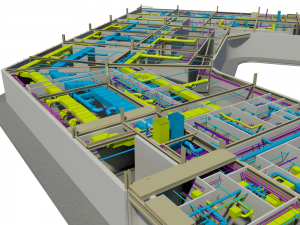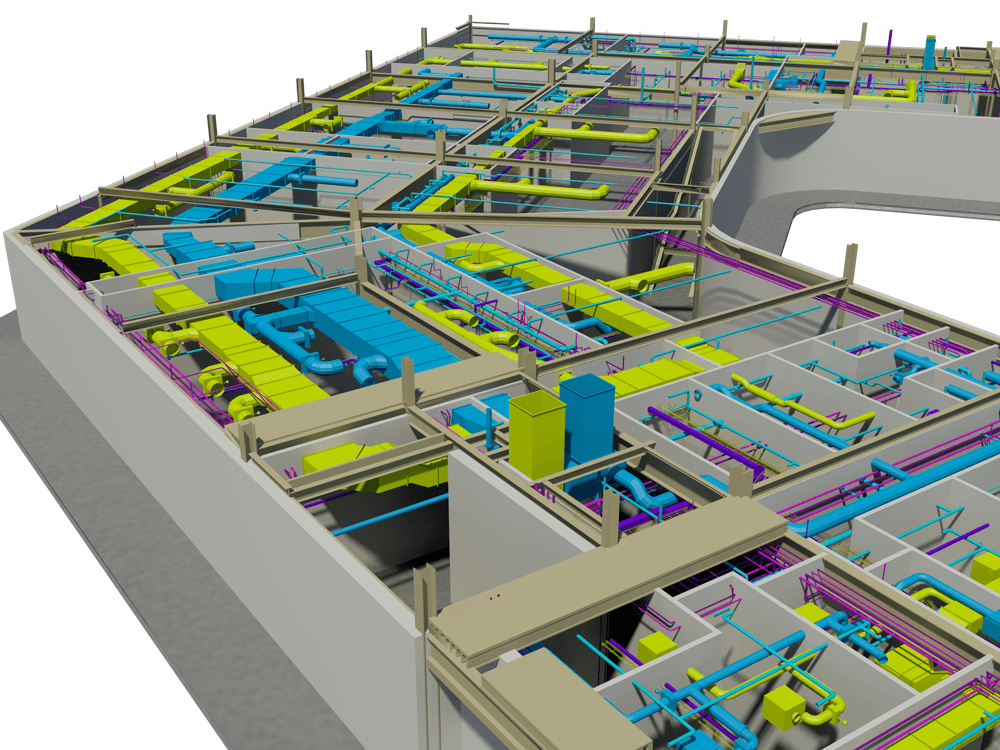Digital Security – The Safe Storage and Sharing of BIM Data
When your business embraces BIM (buildings information modelling) technology, it’s easy to get carried away with the benefits of utilising BIM and the exciting new ways of collaborative working it offers. What is less apparent is that there is potential for BIM to leave you and your data digitally vulnerable. Building in security features, procedures and strategies into the way you operate can help you to protect your BIM digital assets from the risk of the misuse, loss, unintentional disclosure or theft of information.
To fully protect your BIM data, security needs to be embedded into organisations at every level, from the project design team, right through to the delivery end of the business. It is also important that a security-minded approach is implemented throughout the supply chain and that every stakeholder is on board with the data security measures you have in place. 
The British Standards Institution (BSI) has recently published the “Specification for security-minded information modelling, digital built environments and smart asset management – PAS 1192-5”. By utilising the processes set out in PAS 1192-5, BIM users can protect their key assets and maintain the trust of both customers and stakeholders, thus reducing the risk of reputational damage and other risks which would result from a cyber-security breach. This is particularly important for businesses competing in the international construction market where good data security can deliver a significant competitive advantage.
The threat of theft of your BIM data is real and the harm that may be caused to your project could be financial, physical, economic or reputational. From a cyber-security point of view, there is a real risk that a breach could result in your data or information being compromised, disclosed, copied, transmitted, accessed, stolen or used by unauthorised individuals.
When you begin your project and you incorporate BIM into the project, it is vital that you appoint a suitably qualified person as a Built Asset Security Manager – this person will manage the security issues and deal with any threats to the asset in question as well as dealing with the development of security plans, policies and procedures and promoting data and asset security throughout the life cycle of the project.
The risks involved in not taking BIM data security seriously include –
- Authenticity – ensuring that data inputs and outputs are genuine and have not been tampered with
- Availability and reliability – ensuring accessibility and usability in an appropriate and timely fashion
- Confidentiality – ensuring control of access and prevention of unauthorised access to your data
- Possession – preventing unauthorised control, manipulation or interference;
- Utility – ensuring usability and usefulness over time, of your data, information and systems.
Data security is often already embedded in organisations; many have data sharing policies and procedures already in place. Extending data security policies, procedures and protocols to include BIM is necessary and should also be relatively straightforward. Though it is a consideration for any teams involved in BIM projects. Data and data storage should be well managed and secure. Companies offering outsourced BIM services will be well versed in offering a security-minded service in line with PAS 1192-5 guidance.
For more information about CAD Design Services, BIM Compliance and Services in the UAE and UK, visit The CAD Room website at https://www.thecadroom.com/ or phone 0161 427 0348.

